
I have to start with that cover. My God. Marshall Rogers is the best Strange artist since Ditko.
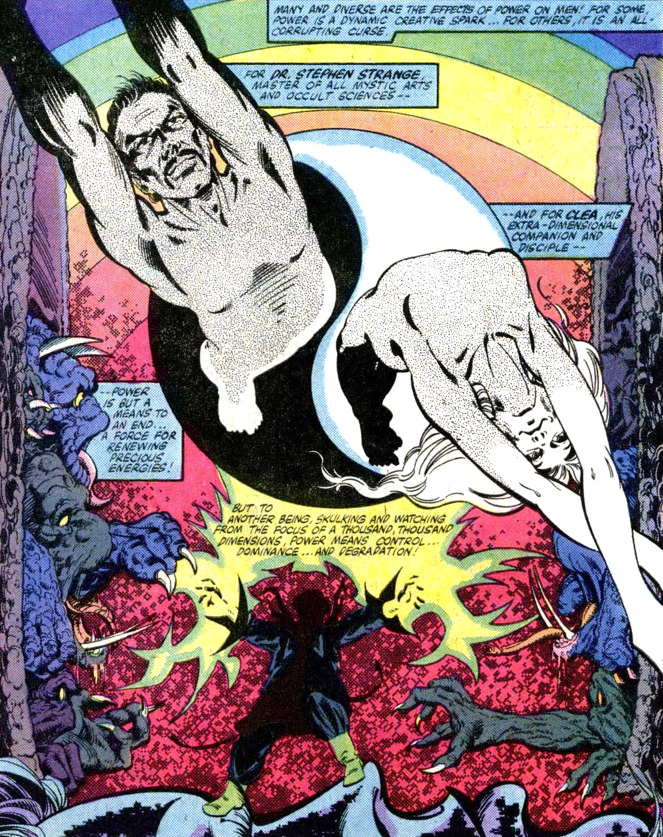
The first few pages are romantic: Dr. Strange and Clea explore another plane of existence where they become “as one,” an obvious sexual reference, and afterwards…
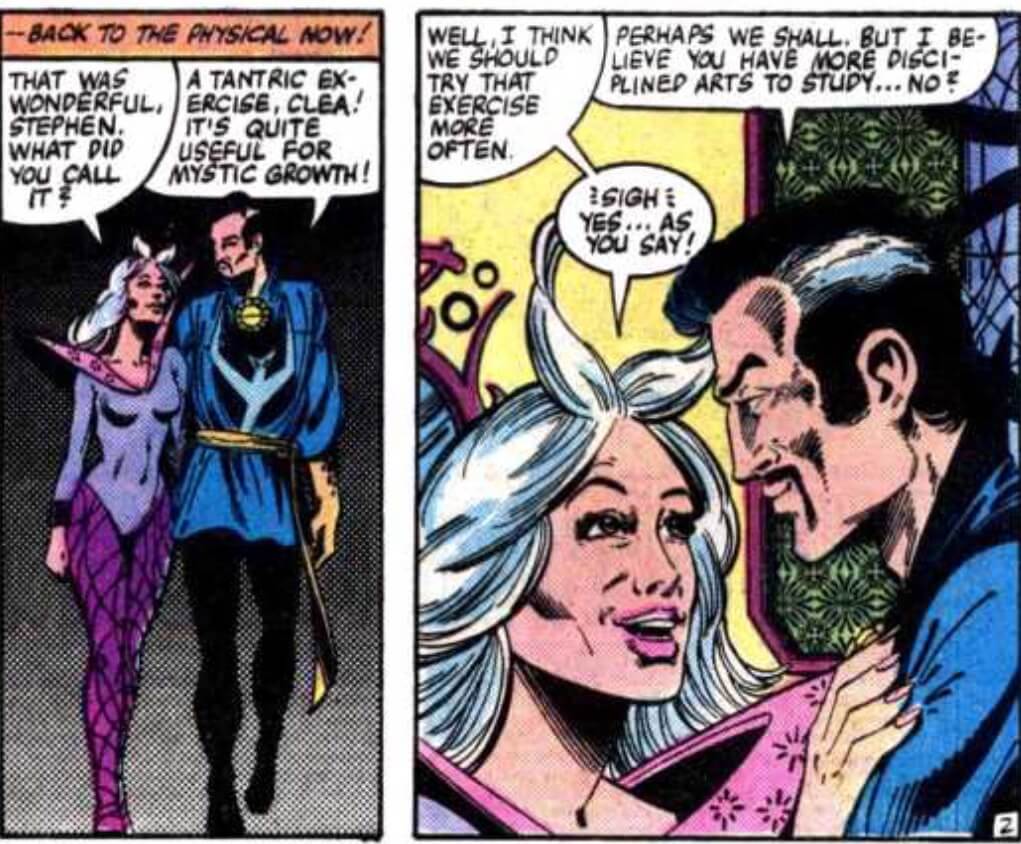
Their relationship is so weird–there’s a clear power dynamic, which makes it feel sexist, and yet there’s a complexity to it that is lacking from most other comic book relationships.
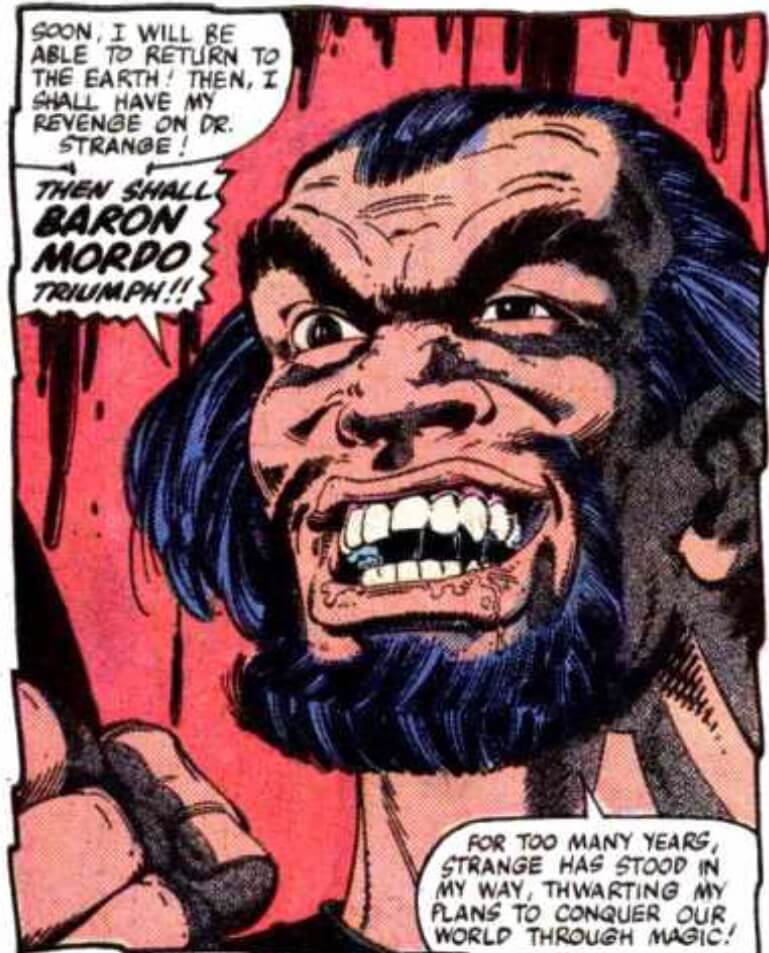
Roger Stern starts with their romance because he knows where this story is going. A woman named Morgana Blessing is crushing madly on Stephen Strange, and Baron Mordo finds out and uses it to his advantage. The temptation is clear–there is a very uncomfortable moment when Clea, Morgana and Stephen are together in a room–and Mordo uses it to disguise himself as Morgana’s cat, getting into Strange’s Sanctum Sanctorum.

From there, it’s some time travel. Strange and Clea go back in time to meet up with Nick Fury and the Howling Commandos, as Mordo uses a Nazi to anchor himself back into our reality.
But then we learn that both Nightmare and Dormammu are watching these events and are manipulating Mordo–to their own advantage. Nightmare possesses Morgana Blessing, so we get a female version of Strange’s arch foe…
Rogers’ covers are tremendous.

And of course, where there’s time-travel, there’s also Rama Tut. Strange goes back in time to revisit the events of Fantastic Four #19. In the interior, we see an original Kirby sequence with Strange added astrally…
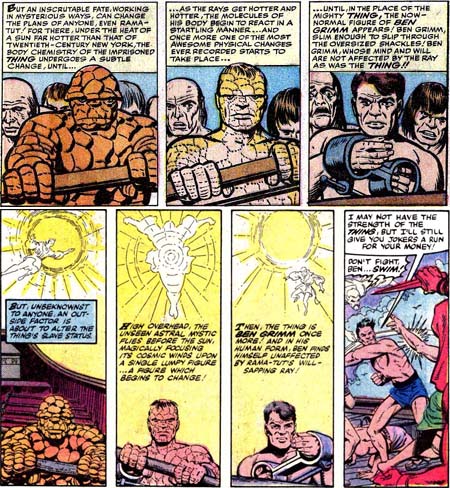
Also: Great use of sound effects!

So Stern and Rogers manage to build in all the major Dr. Strange villains, as well as a major FF story, crammed into just five issues, and all the while they never forget about characterization: By the end, Clea is fed up with Dr. Strange’s flirtations with Morgana, and she leaves him.
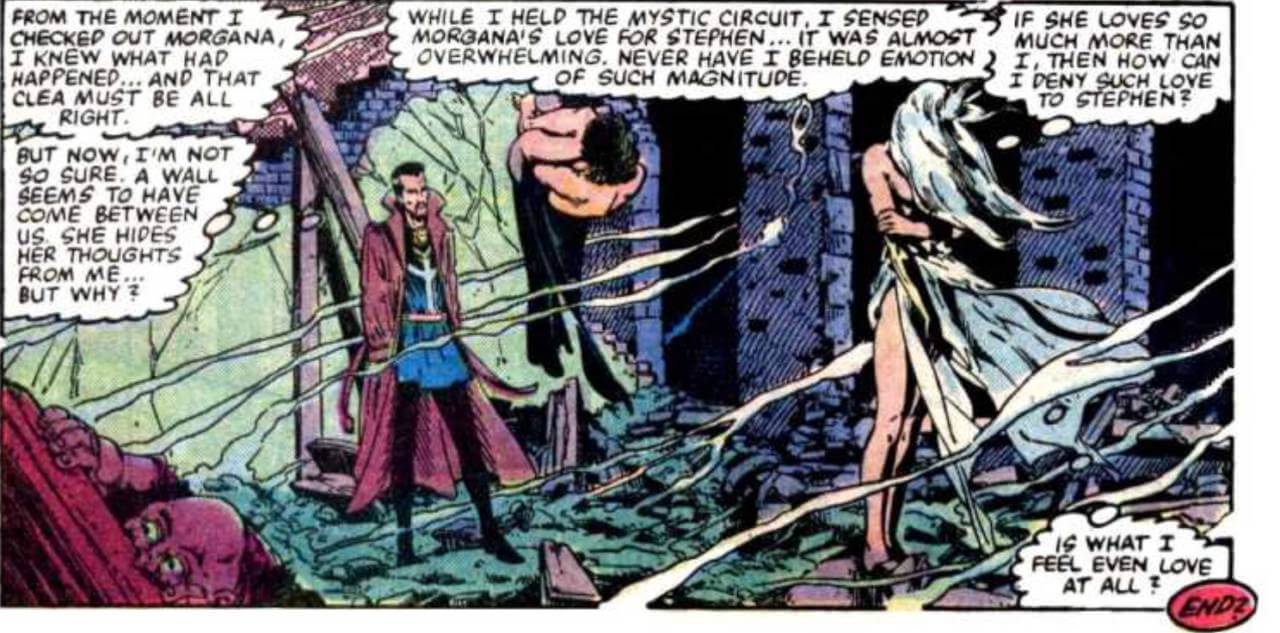
Strange gets sad, and his grief makes it harder for him to concentrate on his spells.
We’re left at a meloncholy place.
